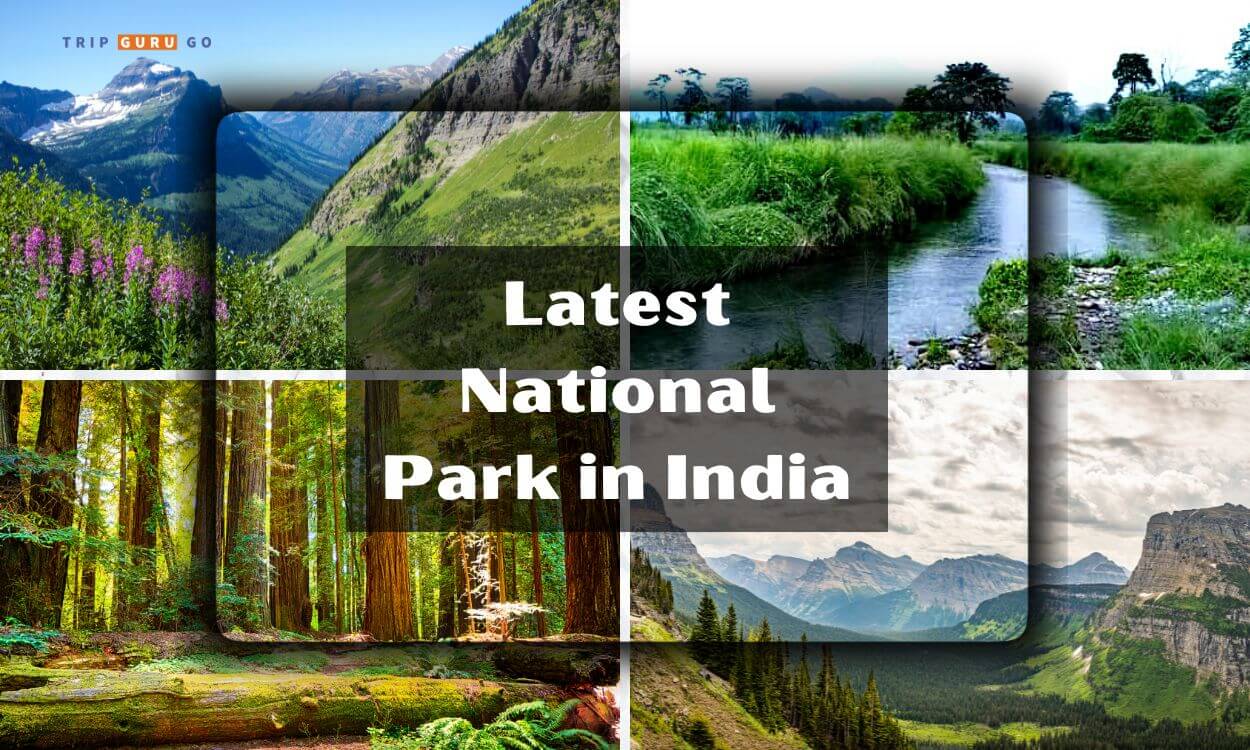Introduction:
Forever capturing the hearts of environment lovers and animal enthusiasts has been India, a magnificent tapestry of varied landscapes and amazing natural beauty. Our country’s unflinching dedication to protecting its natural riches only becomes stronger as the sands of time continue to flow. This admirable endeavor has resulted in the creation of new national parks that serve as monuments to our abundant biodiversity and serve as sanctuaries for our amazing animals. A heartwarming achievement occurred in 2023 and 2024 when India proudly welcomed two more safe havens to its list. The Latest National Park in India 2024’s crown gem is quite noteworthy. These new refuges have sparked the interests of passionate environmentalists and daring explorers, enticing them to investigate the treasures within.
Join me as we embark on a captivating journey into India’s latest national park. Together, we’ll uncover the inspiring tales that birthed its existence, unravel the enigmatic ecosystems it safeguards, and grasp its profound importance to our beloved nation. Let’s now dive into the intricacies that set apart India’s newest gem. This park gracefully enhances our country’s array of cherished natural havens, contributing to the tapestry of safeguarded landscapes.
The Newest Addition: Unveiling the 107th National Park
India has made a historic announcement by introducing its 107th National Park, the newest national park in India. This marks a significant achievement in the nation’s determination to protect its diverse range of wildlife. The latest added national park in India stands as a testament to the country’s relentless efforts to safeguard its diverse flora and fauna. Situated in the breathtaking landscapes of India, this park offers a beautiful mix of habitats, including verdant forests and winding rivers. This place provides a secure refuge for different types of animals, whether they are indigenous or migrating. With this addition, the total number of National Parks in India in 2024 reaches an impressive count. Moreover, this 107th National Park also stands as the largest National Park in India, showcasing the nation’s commitment to preserving its natural treasures.
The newest national park in India, officially designated as the 107th National Park in India, has seamlessly woven itself into the country’s network of protected areas. This remarkable addition not only solidifies India’s global leadership in conservation but also embellishes the already vibrant tapestry of its diverse biodiversity. This monumental step eloquently reflects India’s unwavering commitment to preserving its rich natural heritage. As the largest national park in India, it proudly contributes to the ever-expanding roster of such sanctuaries. With this latest addition, the total number of national parks in India in the year 2024 reaches a noteworthy figure.
Definition of a National Park in India
According to the definition by the Indian Ministry of Environment & Forests, a National Park in India is a designated area. The significance of an area is of utmost importance if it has ecological, faunal, floral, geomorphological, or zoological value. Moreover, this is relevant regardless of whether it’s inside a sanctuary or not. The state government has the authority to designate an area as a National Park. This aims to conserve, nurture, and advance its wildlife and encompassing environment.
- Purpose and Protection: The primary goal of a national park is to safeguard the delicate balance of nature. It serves as a sanctuary for various plant and animal species, each contributing to the area’s ecological health.
- Restricted Human Activity: Within a national park, human activities are kept to a minimum to maintain the natural ecosystem. Only activities approved by the Chief Wildlife Warden in accordance with Chapter IV of the Wildlife Protection Act of 1972 are legal. This ensures that the park remains untouched by human interference, fostering an environment where wildlife can thrive undisturbed.
India’s national park is evidence of its commitment to protecting natural resources for future generations to enjoy. By establishing these protected areas, India aims to strike a harmonious chord between the needs of its wildlife and the interests of humanity. This allows both to coexist in an environment of ecological equilibrium.
Overview: India’s National Parks – Guardians of Biodiversity
India’s large number of National Parks shows how serious it is about protecting its rich natural history. All of these parks are protected by the IUCN at level II. In 1936, India’s first National Park, Jim Corbett National Park, was set up in Uttarakhand. This was the start of the trip. Since then, the country has done a lot to protect its different environments and animals.
- Evolution of Protection: From a mere five national parks in 1970, India’s conservation efforts gained momentum with the enactment of the Wildlife Protection Act in 1972 and Project Tiger in 1973. The nation now has 106 national parks, demonstrating its dedication to habitat protection.
- Biodiversity Havens: Spanning over 44,000 square kilometers (1.35% of India’s land area), these parks provide refuge to a remarkable array of plant and animal species. The National Wildlife Database reports 106 existing national parks, each contributing to the tapestry of biodiversity.
- Expanding Safeguard: The conservation drive continues with proposals for an additional 75 national parks, covering around 16,000 square kilometers. Once realized, the network will comprise a total of 176 parks, creating a formidable force for ecological protection.
- Diverse Landscapes: India’s national parks cover a wide range of landscapes, from the huge Hemis National Park, which is over 4,400 square kilometers, to the small South Button Island National Park, which is only 5.19 square kilometers. They provide homes for a huge number of species.
India’s national parks stand as guardians of the nation’s ecological heritage, serving as compelling reasons to visit India. They are a testament to the country’s dedication to preserving nature’s wonders for future generations. As these protected areas expand and flourish, they ensure a harmonious coexistence between humanity and the natural world, offering unique and awe-inspiring experiences to those who venture to explore them.
How Many National Parks are there in India?
As of the most recent available data, there are 106 national parks in India. These national parks are spread across various Different areas within the country. The various animals and ecosystems of India depend on each and every person to be preserved and protected.
List of National Parks Categorized by State with Respective Number of Parks
| State/Union Territory | Number of National Parks |
|---|---|
| Jammu and Kashmir | 4 |
| Ladakh | 1 |
| Andaman and Nicobar Islands | 9 |
| Madhya Pradesh | 11 |
| Andhra Pradesh | 3 |
| Karnataka | 5 |
| Bihar | 1 |
| Kerala | 6 |
| Goa | 1 |
| Gujarat | 4 |
| Haryana | 2 |
| Himachal Pradesh | 5 |
| Mizoram | 2 |
| Jharkhand | 1 |
| Tamil Nadu | 5 |
| Sikkim | 1 |
| Chhattisgarh | 3 |
| Arunachal Pradesh | 2 |
| Maharashtra | 6 |
| Manipur | 2 |
| Assam | 7 |
| Tripura | 2 |
| Nagaland | 1 |
| Odisha | 2 |
| Rajasthan | 5 |
| Meghalaya | 2 |
| West Bengal | 6 |
| Telangana | 1 |
| Uttar Pradesh | 1 |
| Uttarakhand | 6 |
| Total | 106 |
Which is the latest National Park of India for 2024?
Presenting the most recent addition to India’s natural heritage: the Latest National Park of India 2024, a haven of biodiversity and ecological wonder, poised for discovery and safeguarding. Let us know which are those National Parks, we have listed some here:
The Newest National Park in India 2024: Raimona National Park
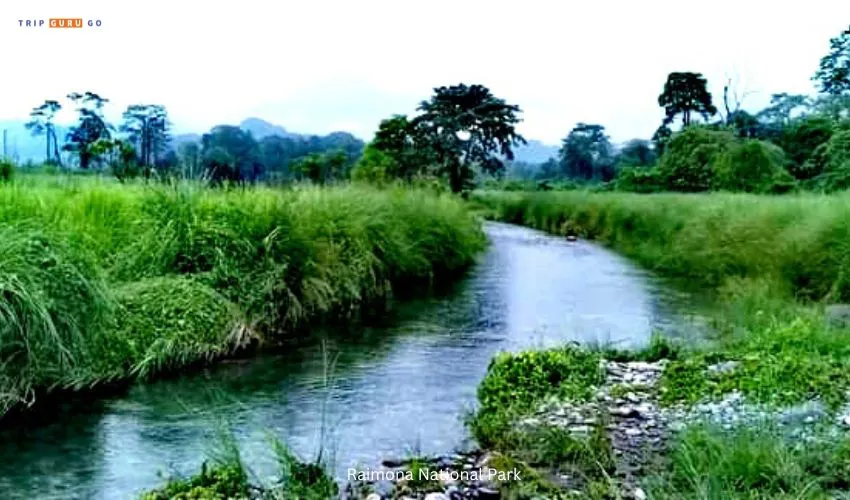
According to the latest database, India will welcome a new addition to its prestigious list of National Parks in 2024: the Raimona National Park. This important addition shows how far the country has come in protecting its environmental treasures. Additionally, there is an ongoing consideration for upgrading the Dehing Patkai Wildlife Sanctuary to the esteemed status of a national park.
Raimona National Park: A Jewel in Assam’s Crown
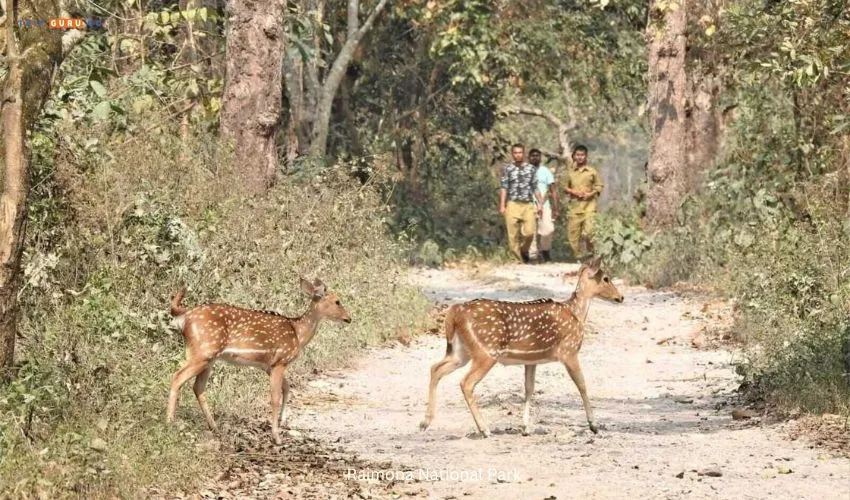
Situated as the 6th national park in the state of Assam, Raimona National Park holds a strategic location within the western buffer of Manas National Park. The Pekua River, which forms a natural boundary and enhances the park’s splendor, graces it with its gentle flow.
Marine National Parks: Protecting Underwater Wonders

India cares about saving more than just its own land. There are six marine national parks in the country that protect the beautiful variety of life that lives under the water.
Past Additions and Notable Locations – Omkareshwar National Park
In 2013, the Omkareshwar National Park in Madhya Pradesh earned its rightful place on the list of national parks. The state’s commitment to ecological protection was shown by this.
Madhya Pradesh boasts the highest count of national parks in India, totaling an impressive 11. Its leadership in preserving the nation’s natural heritage is shown by this.
As India adds more national parks, more animals and plants are being saved. These parks provide secure habitats for creatures, preserve distinctive landscapes, and encourage people to live in harmony with nature. India's dedication to these goals is shown by the fact that Rajamoni National Park is included.
List of national parks located in India
| S.No. | State (number of NPs) | National Parks | Year Established | Area (km2) |
|---|---|---|---|---|
| 1 | Andhra Pradesh (3) | Papikonda National Park | 2008 | 1013 |
| Rajiv Gandhi National Park (Rameswaram) | 2005 | 2.4 | ||
| Sri Venkateswara National Park | 1989 | 353.6 | ||
| 2 | Arunachal Pradesh (2) | Mouling National Park | 1986 | 483 |
| Namdapha National Park | 1983 | 1808 | ||
| 3 | Assam (7) | Dibru-Saikhowa National Park | 1999 | 340 |
| Dehing Patkai National Park | 2021 | 234 | ||
| Raimona National Park | 2021 | 422 | ||
| Kaziranga National Park | 1974 | 859 | ||
| Manas National Park | 1990 | 500 | ||
| Nameri National Park | 1998 | 200 | ||
| Orang National Park | 1999 | 78.81 | ||
| 4 | Bihar (1) | Valmiki National Park | 1989 | 335.65 |
| 5 | Chhattisgarh (3) | Guru Ghasidas National Park | 1981 | 1440.7 |
| Indravati National Park | 1982 | 1258.4 | ||
| Kanger Ghati National Park | 1982 | 200 | ||
| 6 | Goa (1) | Mollem National Park | 1992 | 107 |
| 7 | Gujarat (4) | Blackbuck National Park, Velavadar | 1976 | 34.53 |
| Gir Forest National Park | 1975 | 258.71 | ||
| Marine National Park, Gulf of Kutch | 1982 | 162.89 | ||
| Vansda National Park | 1979 | 23.99 | ||
| 8 | Haryana (2) | Kalesar National Park | 2003 | 46.82 |
| Sultanpur National Park | 1959 | 1.43 | ||
| 9 | Himachal Pradesh (5) | Great Himalayan National Park | 1984 | 754.4 |
| Inderkilla National Park | 2010 | 104 | ||
| Khirganga National Park | 2010 | 710 | ||
| Pin Valley National Park | 1987 | 675 | ||
| Simbalbara National Park | 2010 | 27.88 | ||
| 10 | Jharkhand (1) | Betla National Park | 1986 | 226.33 |
| 11 | Karnataka (5) | Anshi National Park | 1987 | 417.34 |
| Bandipur National Park | 1974 | 874.2 | ||
| Bannerghatta National Park | 1974 | 260.51 | ||
| Kudremukh National Park | 1987 | 600.32 | ||
| Nagarhole National Park | 1988 | 643.39 | ||
| 12 | Kerala (6) | Anamudi Shola National Park | 2003 | 7.5 |
| Eravikulam National Park | 1978 | 97 | ||
| Mathikettan Shola National Park | 2003 | 12.82 | ||
| Pambadum Shola National Park | 2003 | 1.318 | ||
| Periyar National Park | 1982 | 350 | ||
| Silent Valley National Park | 1984 | 89.52 | ||
| 13 | Madhya Pradesh (11) | Bandhavgarh National Park | 1968 | 448.85 |
| Omkareshwar National Park | 2013 | 646 | ||
| Kanha National Park | 1955 | 940 | ||
| Kuno National Park | 1981 | 748.8 | ||
| Madhav National Park | 1959 | 375.22 | ||
| Mandla Plant Fossils National Park | 1983 | 0.27 | ||
| Panna National Park | 1981 | 542.67 | ||
| Pench National Park | 1975 | 292.85 | ||
| Sanjay National Park | 1981 | 466.88 | ||
| Satpura National Park | 1981 | 585.17 | ||
| Van Vihar National Park | 1979 | 4.45 | ||
| 14 | Maharashtra (6) | Chandoli National Park | 2004 | 317.67 |
| Gugamal National Park | 1974 | 361.28 | ||
| Navegaon National Park | 1975 | 133.88 | ||
| Sanjay Gandhi National Park | 1996 | 86.96 | ||
| Tadoba National Park | 1955 | 116.55 | ||
| Pench (Jawaharlal Nehru) National Park | 1975 | 257.26 | ||
| 15 | Manipur (1) | Keibul Lamjao National Park | 1977 | 40 |
| Sirohi National Park | 1982 | 41 | ||
| 16 | Meghalaya (2) | Balphakram National Park | 1985 | 220 |
| Nokrek National Park | 1986 | 47.48 | ||
| 17 | Mizoram (2) | Murlen National Park | 1991 | 100 |
| Phawngpui Blue Mountain National Park | 1992 | 50 | ||
| 18 | Nagaland (1) | Ntangki National Park | 1993 | 202.02 |
| 19 | Odisha (2) | Bhitarkanika National Park | 1988 | 145 |
| Simlipal National Park | 1980 | 845.7 | ||
| 20 | Rajasthan (5) | Desert National Park | 1992 | 3162 |
| Keoladeo National Park | 1981 | 28.73 | ||
| Mukundra Hills National Park | 2006 | 200.54 | ||
| Ranthambore National Park | 1980 | 282 | ||
| Sariska Tiger Reserve | 1992 | 273.8 | ||
| 21 | Sikkim (1) | Khangchendzonga National Park | 1977 | 1784 |
| 22 | Tamil Nadu (5) | Guindy National Park | 1976 | 2.82 |
| Gulf of Mannar Marine National Park | 1980 | 6.23 | ||
| Indira Gandhi Sanctuary and National Park | 1989 | 117.1 | ||
| Mudumalai National Park | 1990 | 103.23 | ||
| Mukurthi National Park | 1990 | 78.46 | ||
| 23 | Telangana (3) | Kasu Brahmananda Reddy National Park | 1994 | 1.43 |
| Mahavir Harina Vanasthali National Park | 1994 | 14.59 | ||
| Mrugavani National Park | 1994 | 3.6 | ||
| 24 | Tripura (2) | Bison (Rajbari) National Park | 2007 | 31.63 |
| Clouded Leopard National Park | 2007 | 5.08 | ||
| 25 | Uttar Pradesh (1) | Dudhwa National Park | 1977 | 490 |
| 26 | Uttarakhand (6) | Gangotri National Park | 1989 | 2390.02 |
| Govind Pashu Vihar National Park | 1990 | 472.08 | ||
| Jim Corbett National Park | 1936 | 520.82 | ||
| Nanda Devi National Park | 1982 | 624.6 | ||
| Rajaji National Park | 1983 | 820 | ||
| Valley of Flowers National Park | 1982 | 87.5 | ||
| 27 | West Bengal (6) | Buxa Tiger Reserve | 1992 | 117.1 |
| Gorumara National Park | 1992 | 79.45 | ||
| Jaldapara National Park | 2014 | 216.51 | ||
| Neora Valley National Park | 1986 | 159.89 | ||
| Singalila National Park | 1986 | 78.6 | ||
| Sundarbans National Park | 1984 | 1330.1 | ||
| 28 | Andaman & Nicobar Islands (9) | Campbell Bay National Park | 1992 | 426.23 |
| Galathea National Park | 1992 | 110 | ||
| Mahatma Gandhi Marine National Park | 1983 | 281.5 | ||
| Middle Button Island National Park | 1987 | 0.44 | ||
| Mount Harriet National Park | 1987 | 46.62 | ||
| North Button Island National Park | 1987 | 0.44 | ||
| Rani Jhansi Marine National Park | 1996 | 256.14 | ||
| Saddle Peak National Park | 1987 | 32.54 | ||
| South Button Island National Park | 1987 | 0.03 | ||
| 29 | Jammu & Kashmir (4) | Dachigam National Park | 1981 | 141 |
| Kishtwar National Park | 1981 | 425 | ||
| Kazinag National Park | 1992 | 228.5 | ||
| Salim Ali National Park | 1986 | 9.07 | ||
| 30 | Ladakh (1) | Hemis National Park | 1981 | 3350 |
Latest National Park in India 2024 Map With States
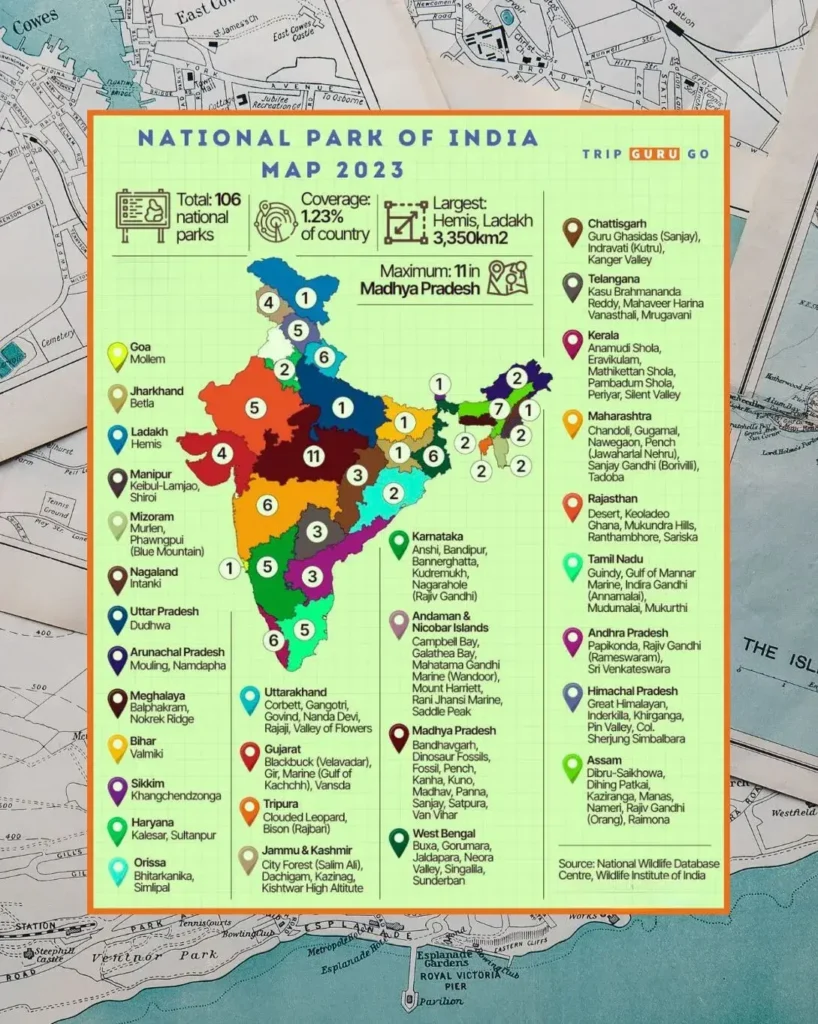
Top 10 National Parks in India
Explore India’s incredible biodiversity and natural beauty at the Top 10 National Parks in India. From the beautiful Himalayas to the thick forests of the western hills, these parks highlight how the country’s environments are different and how much wildlife is there. Here are the 10 most beautiful and diverse places in India:
1. Jim Corbett National Park:
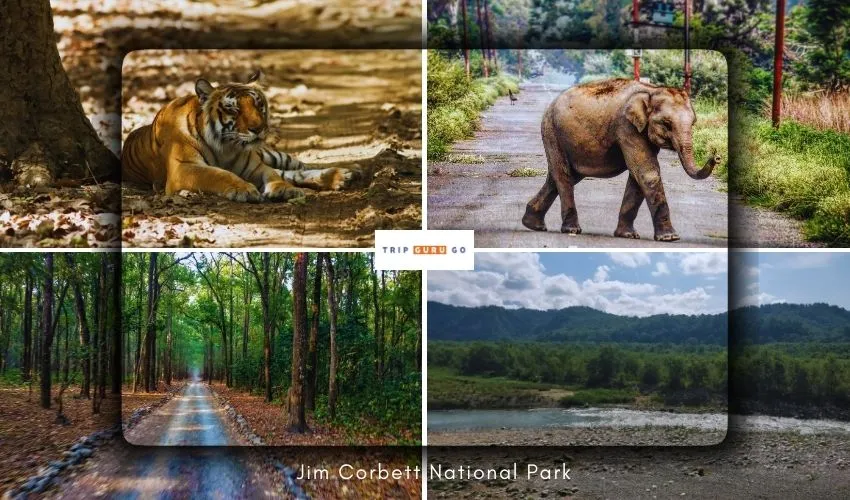
The Jim Corbett National Park in India is a majestic wildlife sanctuary, serving as the home to tigers, diverse flora and fauna, and attracting nature enthusiasts from around the world.
- Established: 1936
- Location: Uttarakhand
- History: Named after Jim Corbett, a renowned conservationist, and author, India’s oldest national park is aimed at protecting Bengal tigers.
- Geography: Encompasses hills, grasslands, and the Ramganga River.
- Climate: Subtropical, with hot summers and cool winters.
- Flora and Fauna: Tigers, leopards, elephants, and various deer species Rich birdlife, including eagles and vultures.
- Eco-tourism: Offers jeep safaris, elephant rides, birdwatching, and wildlife photography.
- Area: Approx. 1,318 km²
- Best time to Visit: Explore Jim Corbett National Park from December to March for cooler temperatures and optimal wildlife viewing. Spot the magnificent Royal Bengal Tiger, especially in the mornings.
Overview:
India is dedicated to protecting its rich natural history, which is shown by its large network of IUCN protection level II national parks. The journey began in 1936 with the establishment of Jim Corbett National Park in Uttarakhand. This marked India’s dedicated efforts to safeguard diverse ecosystems and wildlife.
- Steady Evolution of Protection: The pivotal Wildlife Protection Act of 1972 and the launch of Project Tiger in 1973 solidified conservation efforts.
- Biodiversity Havens: Spanning 44,000 sq km, India’s 106 national parks offer refuge to a remarkable array of flora and fauna.
- Expanding Safeguard: Plans for 75 more parks across 16,000 sq km showcase India’s commitment to ecological preservation.
- Diverse Landscapes: From expansive Hemis National Park (4,400 sq km) to petite South Button Island National Park (5.19 sq km), each park nurtures diverse habitats.
These national parks stand as guardians of India’s ecological heritage, a testament to the country’s dedication to preserving nature’s wonders for future generations. As these protected areas flourish, they ensure harmonious coexistence between humanity and the natural world.
How to Reach Jim Corbett National Park:
To reach Jim Corbett National Park in Uttarakhand, India:
- By Air: Fly to Pantnagar Airport (85 km away) or Delhi’s Indira Gandhi International Airport (260 km away). Then, take a taxi or bus.
- By Train: Arrive at Ramnagar Railway Station (15 km away) from cities like Delhi and Lucknow. Take a taxi or bus to the park.
- By Road: Drive from nearby cities or take buses and taxis.
Accommodation:
Choose from various options:
- Luxury: Try Aahana Resort, Namah Resort, or Jim’s Jungle Retreat for upscale amenities and guided tours.
- Forest Rest Houses and Cottages: Rustic stay inside the park. Book ahead.
- Budget and Mid-Range: Affordable hotels in Ramnagar and Dhikuli.
- Camping and Eco-Lodges: Connect closely with nature.
Remember to book in advance, especially during peak seasons, to ensure a smooth stay at Jim Corbett National Park.
2. Kaziranga National Park:
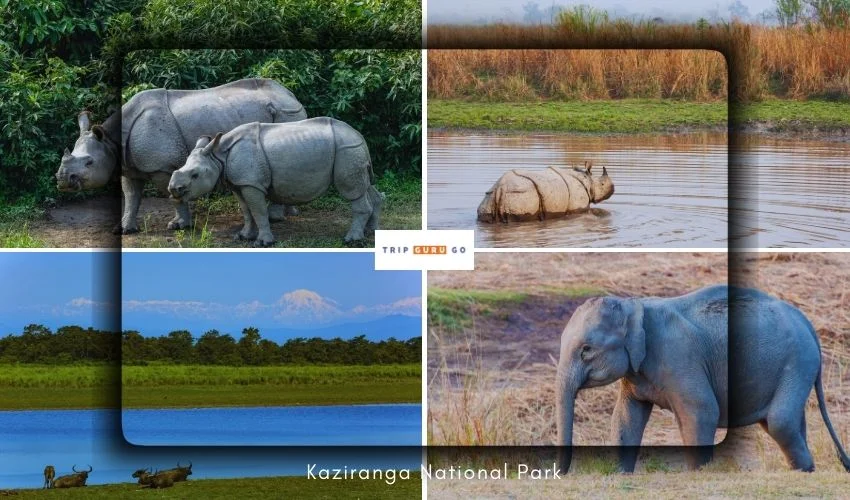
The Kaziranga National Park in India is a UNESCO World Heritage Site renowned for rhino conservation, lush landscapes, and diverse wildlife.
- Established: 1905
- Location: Assam
- History: Originally established as a reserve to protect one-horned rhinoceros,
- Geography: Floodplains, tall elephant grass, and marshland
- Climate: Tropical monsoon with high rainfall.
- Flora and Fauna: Indian rhinoceros, tigers, elephants, and wild water buffalo Rich bird diversity.
- Eco-tourism: Elephant and jeep safaris, birdwatching, river cruises
- Area: Approx. 1,090 km²
- Best time to Visit: From November to March, experience ideal weather and wildlife viewing at Kaziranga. Monsoon flooding prompts closure from May to September.
Century of Conservation: Kaziranga National Park
For those who love animals, Kaziranga National Park in Assam, India, is a paradise. It’s a UNESCO World Heritage Site renowned for its remarkable conservation efforts. Here’s a hint as to its importance:
- Largest Rhino Population in the World: Kaziranga is crucial to the preservation of rhinos since it is home to an astounding two-thirds of the world’s population of Indian rhinoceroses.
- Biodiversity Hotspot: This park, declared a Tiger Reserve in 2006, is a thriving ecosystem harboring diverse species, including elephants, wild water buffalo, and swamp deer.
- Avian Abode: Kaziranga, recognized by BirdLife International as an Important Bird Area, diligently protects various avifaunal species.
- Remarkable Conservation Success: Amid lush landscapes and four rivers, Kaziranga triumphs in wildlife preservation, highlighting effective strategies’ positive impact.
- Challenges and Controversies: Despite its accomplishments, the park has faced scrutiny over its conservation methods. A BBC documentary raised questions about its approach, resulting in a debate over the shoot-at-sight policy and broader conservation practices.
- A Century of Conservation: Celebrating its centennial in 2005, Kaziranga’s legacy traces back to its establishment as a reserve forest in 1905.
Kaziranga National Park stands as an emblem of nature’s resilience, boasting rich biodiversity and dedicated species safeguarding. The continual effort to strike a balance between conservation and peaceful cohabitation of humans is shown by this.
3. Ranthambore National Park:
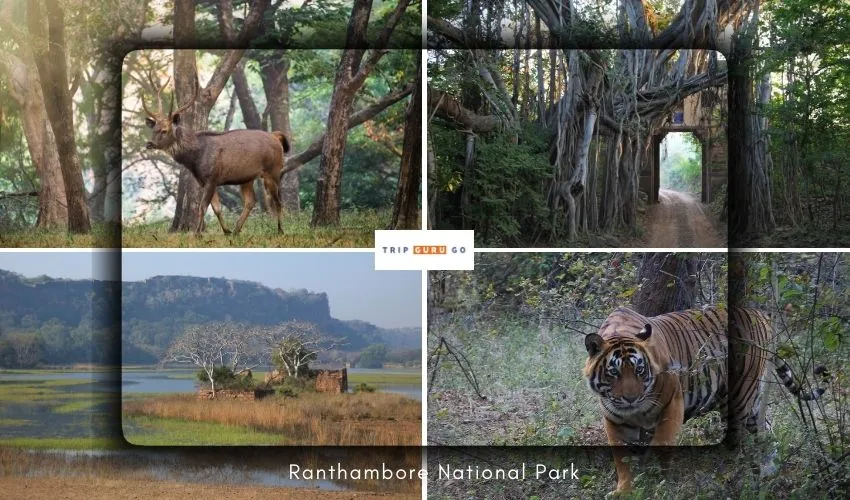
Ranthambore National Park is a renowned Indian wildlife sanctuary, famous for its majestic tigers and diverse flora and fauna. A haven for nature enthusiasts and photographers.
- Established: 1980
- Location: Rajasthan
- History: Originally a hunting ground for Maharajas, it was later declared a wildlife sanctuary.
- Geography: Rocky terrain, lakes, ancient ruins
- Climate: Semi-arid with hot summers and cool winters.
- Flora and Fauna: Bengal tigers, leopards, sloth bears, and various deer species
- Eco-tourism: Jeep and canter safaris, wildlife photography
- Area: Approx. 1,334 km²
- Best time to Visit: Explore Ranthambore National Park’s beauty between October and June, with the ideal period being the comfortable 10℃ to 30℃ winter months from October to March.
Ranthambore: Wildlife and Heritage Harmony
Nestled in the vibrant state of Rajasthan, India, Ranthambore National Park emerges as a captivating haven for wildlife enthusiasts. Here’s a glimpse of its essence:
- Royal Wildlife Sanctuary: Originally Sawai Madhopur Game Sanctuary in 1955, the park spans 1,334 km2 with diverse landscapes of forests, meadows, and lakes.
- Tiger’s Realm: Ranthambore, a part of Project Tiger since 1973, gained prominence for its tiger conservation efforts. The park’s core area of 275 km2 and a buffer zone collectively safeguard its diverse ecosystem.
- Historic Connection: Named after the ancient Ranthambore Fort, this park is steeped in history. The 10th-century fort, perched at 210 m, houses awe-inspiring temples, including the impressive Karauli stone temples.
- Flora and Fauna: Ranthambore boasts a rich biodiversity, with 539 species of flowering plants painting the landscape. The park’s arid terrain becomes a refuge for various wildlife species, including the majestic Indian tiger.
- Tranquil Waterworld: Amidst this wilderness, Padam Talao stands as the largest lake, embellished by the graceful Jogi Mahal and a colossal Banyan tree.
- Aravali Enchantment: The park’s landscapes are a harmonious blend of dense tropical dry forests, rocky terrains, and winding streams. This creates an ecosystem that resonates with the Khathiar-Gir dry deciduous forest ecoregion.
Ranthambore National Park captures a harmonious blend of history and nature. It presents a captivating mosaic of wildlife and heritage amidst Rajasthan’s regal charm.
4. Sundarbans National Park:
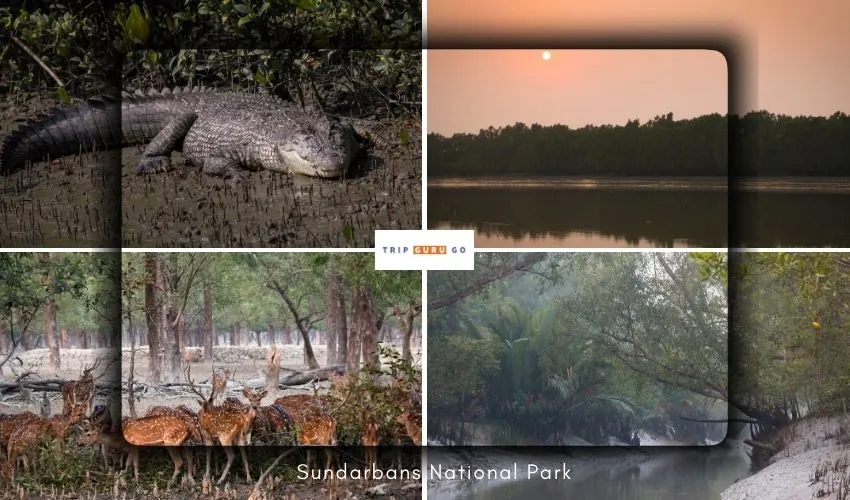
The distinctive mangrove environment of Bangladesh’s and India’s Sundarbans National Park is a UNESCO World Heritage Site. It is home to diverse wildlife and serves as a critical tiger habitat.
- Established: 1984
- Location: West Bengal and Bangladesh
- History: UNESCO World Heritage Site renowned for its mangrove forest
- Geography: A complex network of tidal waterways, mudflats, and islands
- Climate: Tropical with high humidity.
- Flora and Fauna: Royal Bengal tiger, saltwater crocodile, spotted deer, diverse birdlife
- Eco-tourism: Boat safaris, birdwatching, mangrove exploration
- Area: Approx. 1,330 km² (India’s portion).
- Best time to Visit: Visit from Sept to March for pleasant winter weather. Summers are hot but manageable for travel.
Discover the Sundarbans National Park, a remarkable sanctuary in West Bengal, India, celebrated for its intricate mangrove forests and diverse wildlife.
- Unique Ecosystem: Located on the Ganges Delta, it thrives as a national park, tiger reserve, and biosphere reserve, maintaining a delicate mangrove balance.
- Tigers’ Refuge: It is home to the famous Bengal tiger and gives these majestic animals a safe place to live among a maze of waterways and lush vegetation.
- Rich Biodiversity: There are many different kinds of birds, snakes, and saltwater crocodiles in the park, making it a living fabric.
- Heritage and Recognition: Its journey from tiger reserve to UNESCO World Heritage Site and Ramsar site highlights its enduring commitment to conservation.
- Living Biosphere: With roots dating back to the 19th century, it stands as a living testament to the intricate relationship between humanity and nature.
- Expansive Delta: Encompassing the Ganges Delta and beyond, it is meandering waterways and mangrove-clad expanses underscore its vital role in biodiversity preservation.
Explore the Sundarbans, where nature’s wonders unfold in a harmonious dance of land, water, and captivating wildlife.
5. Gir Forest National Park:

Gir Forest National Park, located in India, is a vital refuge for the endangered Asiatic lion, preserving diverse flora and fauna in its diverse ecosystem.
- Established: 1965
- Location: Gujarat
- History: Established to conserve Asiatic lions
- Geography: Dry deciduous forests, grasslands
- Climate: Tropical with hot summers and mild winters.
- Flora and Fauna: Asiatic lions, leopards, various deer species, and over 300 bird species
- Eco-tourism: Jeep safaris, lion tracking, birdwatching
- Area: Approx. 1,410 km²
- Best time to Visit: Explore Gir National Park’s diverse wildlife in pleasant winter (Dec-Mar) weather. Park is closed Jun 16-Oct 15.
Asiatic Lions and Biodiversity Haven: Gir National Park
Explore the realm of Gir National Park, also known as Sasan Gir, nestled in Gujarat, India, and dedicated to the conservation of the majestic Asiatic lion and diverse wildlife:
- Royal Origins: Once a hunting ground for Indian princely states, it transformed into a sanctuary in the 19th century under the Nawab of Junagarh’s initiative, safeguarding the dwindling Asiatic lion population.
- Lion’s Stronghold: Recognized as the last abode of the Asiatic lion, Gir National Park boasts a significant lion population, with the 2015 census revealing an impressive increase.
- Protected Biodiversity: With an expanse of 1,410.30 km2, including a national park and wildlife sanctuary, it safeguards both lions and other species within the Khathiar-Gir dry deciduous forest ecoregion.
- Seasonal Cycles: Closed during the monsoon (June to October), the park respects the natural rhythms of its ecosystem, allowing its inhabitants a period of respite.
- Conservation Victory: The work of government forest offices, people who care about wildlife, and non-governmental organizations (NGOs) has made Gir a sign of successful efforts to protect biodiversity.
- Ecological Gem: Revered as a crown jewel of Gujarat’s natural heritage, Gir’s diverse flora and fauna, including the iconic Asiatic lion, underscore its vital role in safeguarding India’s rich wildlife.
Embark on a journey to Gir National Park, where the roar of the Asiatic lion echoes through a tapestry of conservation success and natural beauty.
6. Periyar National Park:
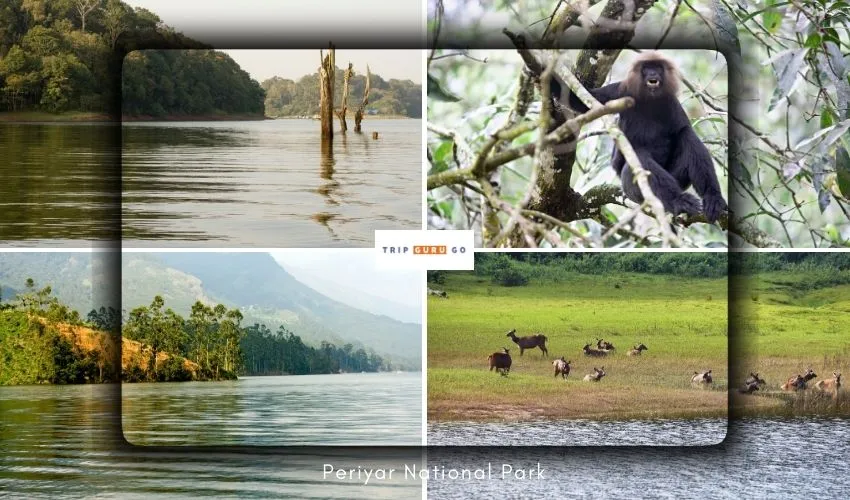
In Kerala, India, Periyar National Park is a safe place for many different kinds of plants and animals. It has green woods, a clear lake, and many different kinds of wildlife, making it a nature lover’s dream.
- Established: 1982
- Location: Kerala
- History: Notable for conservation of tigers and elephants.
- Geography: Hilly terrain, Periyar Lake.
- Climate: Tropical with heavy rainfall.
- Flora and Fauna: Elephants, tigers, gaurs, lion-tailed macaques, and diverse bird species.
- Eco-tourism: Boat safaris, trekking, birdwatching.
- Area: Approx. 305 sq km.
- Best time to Visit: Explore Periyar National Park from September to June, with lush monsoons (September to early October) enhancing its vibrant vegetation.
Periyar National Park: Kerala’s Pristine Wildlife Haven
Discover the natural treasure of Periyar National Park and Wildlife Sanctuary, nestled in the picturesque landscapes of Kerala, India:
- Protected Wilderness: Spanning across 925 km2, this sanctuary extends over the Idukki and Pathanamthitta districts, encompassing lush forests, pristine rivers, and diverse ecosystems.
- Elephant and Tiger Haven: Renowned as an elephant and tiger reserve, Periyar safeguards these magnificent creatures within its rich expanse, contributing to their conservation.
- Flora and Fauna Oasis: Periyar is a safe haven for rare, indigenous, and threatened species. This is also house to a wide variety of wildlife and plants.
- Ecological Significance: The park holds great ecological importance, serving as a major watershed for two vital rivers in Kerala – the Periyar and the Pamba.
- Spectacular Setting: Situated in the Cardamom Hills and Pandalam Hills of the Western Ghats, the sanctuary offers a breathtaking backdrop, fostering a harmonious coexistence of nature and wildlife.
- Historical Conservation: The legacy of wildlife protection in the region dates back to 1934, when the Maharaja of Travancore declared the surrounding forests a private reserve, marking the beginnings of its conservation journey.
- Legacy of Preservation: Evolving from Nellikkampatty Reserve to a wildlife sanctuary in 1950, Periyar stands as a testament to Kerala’s commitment to safeguarding its natural heritage.
Embark on a journey to Periyar National Park, where the harmony of nature and wildlife thrives, weaving a vibrant tapestry of biodiversity and conservation.
7. Bandhavgarh National Park:
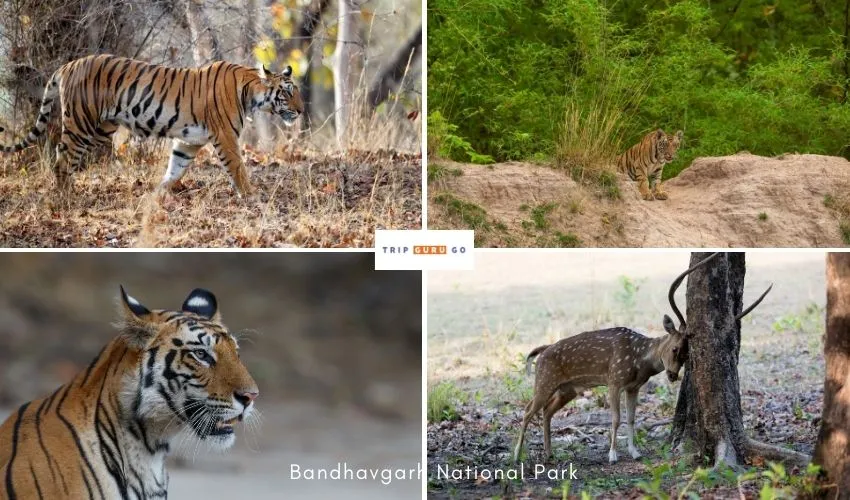
Bandhavgarh National Park, located in India, boasts rich biodiversity and is renowned for Bengal tigers. Lush forests, ancient ruins, and diverse wildlife make it a captivating eco-tourism destination.
- Established: 1968
- Location: Madhya Pradesh
- History: Historically a hunting ground for Maharajas
- Geography: Vindhya mountain ranges, mixed forests
- Climate: Tropical with extreme temperature variations.
- Flora and Fauna: Bengal tigers, leopards, deer species, and over 250 bird species
- Eco-tourism: Jeep and elephant safaris, wildlife photography
- Area: Approx. 1,536 km²
- Best time to Visit: Explore Bandhavgarh’s attractions from October to March, as temperatures drop to 10 degrees, offering a pleasant and humidity-free environment for an ideal expedition.
8. Hemis National Park:
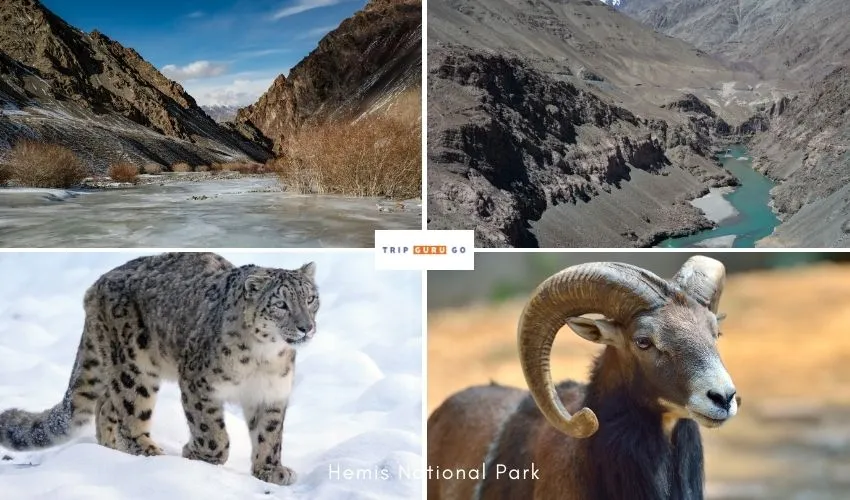
Hemis National Park, situated in India’s Ladakh region, is renowned for its diverse wildlife. It houses snow leopards, Himalayan birds, and rare species, all set against the backdrop of stunning Himalayan landscapes.
- Established: 1981
- Location: Ladakh, Jammu and Kashmir
- History: Aimed at protecting the endangered snow leopard
- Geography: High-altitude desert, rugged mountains
- Climate: Cold desert with minimal precipitation.
- Flora and Fauna: Snow leopards, blue sheep, Himalayan wolves, and various bird species
- Eco-tourism: Snow leopard spotting treks, cultural experiences
- Area: Approx. 4,400 km²
- Best time to Visit: Explore Hemis National Park between May and October, and catch the famed Hemis Monastery festival in mid-summer. Avoid post-October visits due to rain-related road closures.
Discover Hemis National Park, Ladakh’s extraordinary high-elevation sanctuary:
- Snow Leopard Haven: Home to a thriving population of elusive snow leopards, it boasts one of the world’s highest densities of these predators.
- Distinct Location: The park stands as India’s sole national park north of the Himalayas, preserving Ladakh’s rugged beauty.
- Conservation Success: It’s India’s largest notified protected area and the second-largest contiguous protected region, after Nanda Devi Biosphere Reserve.
- Diverse Wildlife: Hemis shelters endangered mammals, with the snow leopard as a flagship species.
- Growing Protection: Established in 1981, it expanded to cover 4,400 km2, becoming South Asia’s largest national park.
- Varied Ecosystems: Boundaries trace along the Indus River, encompassing catchments and parts of the Zanskar Range.
- Unique Context: Hemis is India’s protected area in the Palearctic realm, neighboring Changthang Wildlife Sanctuary.
Explore Hemis National Park’s rugged charm and vital conservation efforts, which make it a Himalayan treasure.
9. Keoladeo National Park:
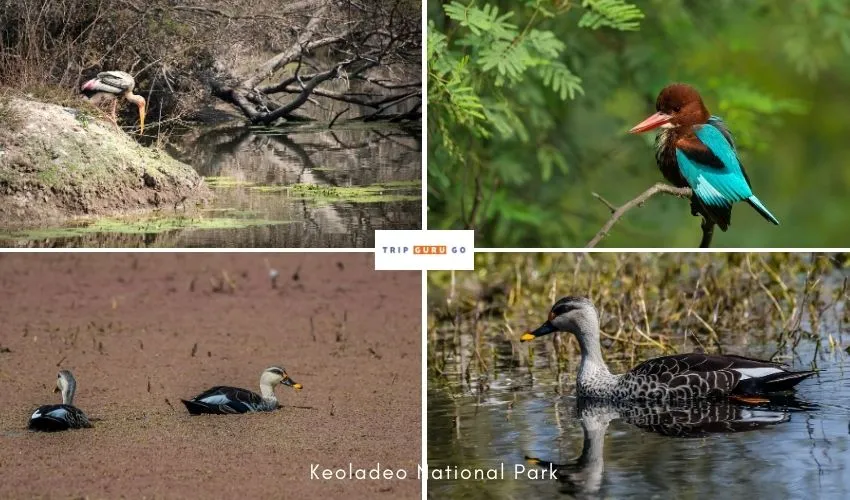
The Keoladeo National Park, located in India, is a UNESCO World Heritage Site famous for its diverse avian population and wetland ecosystem. Rich biodiversity and birdwatching paradise.
- Established: 1982
- Location: Rajasthan
- History: Formerly a duck-hunting ground, it was later designated a national park.
- Geography: Wetlands, marshes, shallow lakes
- Climate: tropical, with distinct wet and dry seasons.
- Flora and Fauna: Over 370 bird species, including migratory birds
- Eco-tourism: Birdwatching, guided walks, cycle rickshaw rides
- Area: Approx. 28.73 km².
- Best time to Visit: Explore Keoladeo National Park year-round. Spot resident birds from August to November, migrants from October to February, and some in March.
Explore the captivating Keoladeo National Park, renowned as an avifauna sanctuary in Bharatpur, Rajasthan.
- Birdwatcher’s Paradise: A winter refuge for over 350 bird species, this park transforms into a vibrant avian spectacle during the colder months.
- UNESCO Heritage: Designated a UNESCO World Heritage Site in 1985 due to its exceptional bird biodiversity and wetland ecosystems,
- Varied Habitats: The park’s 29 km2 reserve, known as Ghana, encompasses dry grasslands, woodlands, wetlands, and woodland swamps.
- Rich Wildlife: Home to 366 bird species, 379 floral species, various reptiles, amphibians, and invertebrates, it showcases Rajasthan’s vibrant biodiversity.
- Historical Legacy: Originally a hunting ground for Maharajas, it was established as a sanctuary in 1971 and later as a national park in 1982.
- Conservation Efforts: Once a duck-shooting preserve, the park now safeguards Bharatpur from floods and supports village cattle grazing.
- Cultural Significance: Named after the Keoladeo (Shiva) temple within its boundaries, the park’s history dates back 250 years.
Discover Keoladeo National Park’s blend of natural splendor and rich heritage, offering a haven for both wildlife and visitors alike.
10. Bannerghatta National Park:
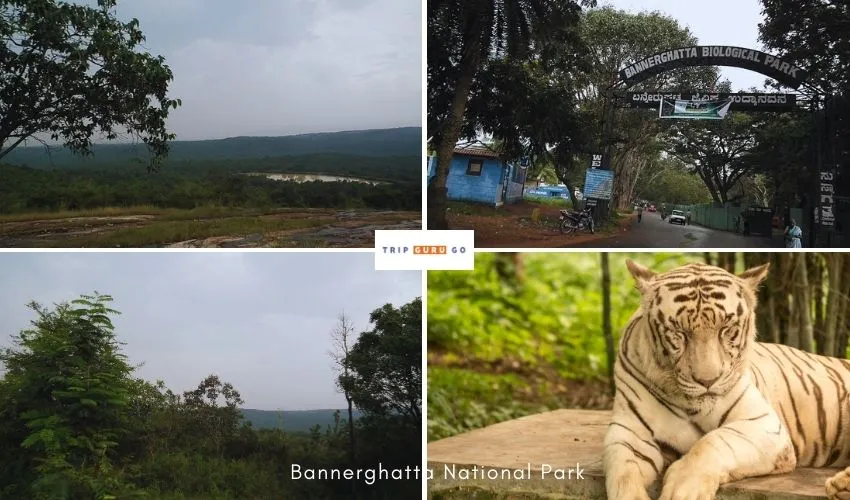
Bannerghatta National Park is a diverse wildlife sanctuary near Bangalore, India. It shelters various species, including tigers, lions, and elephants, amidst lush forests and natural beauty.
- Established: 1970
- Location: Karnataka
- History: Originally a zoo, it was later expanded to include a national park.
- Geography: Hills, forests, scrubland
- Climate: Tropical with mild winters.
- Flora and Fauna: Tigers, lions, elephants, and various wildlife species
- Eco-tourism: Safari rides, butterfly parks, rescue center visits
- Area: Approx. 260.5 km²
- Best time to Visit: Visit Bannerghatta National Park between November and June for pleasant weather and optimal wildlife sightings, immersing yourself in nature’s wonders.
Explore the natural wonder of Bannerghatta National Park, nestled near Bangalore, Karnataka:
- Heritage and Wilderness: Established in 1970 and declared a national park in 1974, this park is a blend of ancient temples, trekking trails, and diverse wildlife.
- Wildlife Diversity: Home to a wide range of wildlife, the park boasts a zoological garden known as Bannerghatta Biological Park.
- Cultural and Spiritual: Explore ancient temples within the park, offering a unique blend of nature and worship.
- Safari Adventures: Embark on a guided 6-kilometer safari tour through specially designed safari roads, perfect for spotting wildlife and engaging foreign tourists.
- Conservation Challenges: The park has faced challenges, with a portion shrinking due to urbanization and agricultural expansion.
- Natural Landscape: Located in the Anekal range, the park features hilly terrain, granite sheets, moist deciduous forests, and scrubland.
- Wildlife Corridor: Serving as a vital wildlife corridor, the park connects BR Hills and Sathyamangalam Forest, supporting the elephant movement.
Immerse yourself in the beauty and diversity of Bannerghatta National Park, a sanctuary of nature and culture just a short distance from bustling Bangalore.
How Many Types of National Parks Are There in India?
In India, there are several different kinds of national parks that have various environments, and animals. These various types of national parks show the country’s wide range of wildlife and biodiversity. India has the following types of national parks:
- Tropical Rainforest National Parks: These parks are located in regions with high rainfall and feature lush tropical rainforests. They include a variety of unusual and endangered species of animals and plants.
- Temperate Forest National Parks: Found in regions with moderate climates, these parks showcase temperate forests with a mix of deciduous and evergreen trees. They are home to diverse wildlife.
- Alpine and Tundra National Parks: Situated in high-altitude regions, these parks experience extreme cold and house unique alpine flora and fauna adapted to harsh conditions.
- Desert National Parks: These parks are located in arid and semi-arid regions and feature desert landscapes and adapted wildlife species, such as desert foxes and various reptiles.
- Coastal and Marine National Parks: Situated along coastlines and in marine environments, these parks protect coastal habitats, coral reefs, and aquatic life.
- Grassland National Parks: Found in grassland ecosystems, these parks showcase open grasslands with a variety of herbivores and predators.
- Wetland National Parks: These parks encompass wetland ecosystems, including marshes, swamps, and lakes, providing habitat for waterbirds and aquatic species.
- Mountain National Parks: Located in mountainous regions, these parks encompass diverse elevations and house a mix of flora and fauna adapted to the altitude.
- Island National Parks: Found on remote islands, these parks protect unique island ecosystems and endemic species.
- Transboundary National Parks: Some parks span international borders, promoting cooperation and conservation efforts between neighboring countries.
India’s various national parks play a crucial role in preserving the country’s natural heritage while promoting ecotourism and environmental awareness.
Explore Delhi’s finest attractions – discover the best places to visit in Delhi for an unforgettable journey.
Safeguarding India’s National Parks and Wildlife: Government Initiatives
The government of India has taken a lot of steps to protect and preserve important national parks and a wide variety of wildlife in the country. Among these steps are:
- Wildlife Protection Act (1972): Prohibits hunting, poaching, and trading of endangered species, establishes protected areas, and enforces penalties for violations.
- Project Tiger (1973) and Project Elephant (1992): Focus on conserving tigers and elephants, including habitat preservation, anti-poaching measures, and community engagement.
- Eco-sensitive Zones: Buffer areas around parks regulate human activities to minimize negative impacts on ecosystems.
- Anti-Poaching Measures: Enhanced patrolling, technology use, and training combat illegal wildlife trade.
- Community Involvement: Engages locals in conservation through eco-tourism and livelihood programs.
- Biodiversity Conservation: Strategies like NBSAP target species and habitat preservation.
- International Collaboration: Agreements like CITES curb illegal wildlife trade.
- Research and Education: Continuous monitoring informs conservation strategies, while awareness programs promote public support.
These concerted efforts by the Indian government reflect its commitment to securing the invaluable national parks and precious wildlife that contribute to the nation’s ecological heritage.
Conclusion
In the end, India is happy that it introduced its latest national park in 2024, which shows how dedicated it is to protecting wildlife. The nation’s continued efforts to protect its natural legacy for future generations are reflected in this addition. As more people discover this natural area, the park’s environment is protected and public awareness of it is raised. It also makes sure that its beauty and meaning will last for a long time.
FAQs
In 2024, there are 106 National Parks in India, covering a total area of 44,378 square kilometers. These national parks play a crucial role in preserving the country’s diverse flora and fauna.
The 105th national park in India is named “Dehing Patkai National Park.
Madhya Pradesh has the highest number of national parks in India in 2024, showcasing its rich biodiversity and commitment to conservation.
In 2024, the Jim Corbett National Park has been renamed as the “Ramganga National Park.”
The three newest national parks in India established in recent times are: Raimona National Park, Marine National Park, Dibru-Saikhowa National Park
The South Button Island National Park in the Andaman and Nicobar Islands holds the distinction of being the smallest National Park in India.
Punjab has the minimum number of national parks in India in 2024, reflecting its smaller geographical size compared to other states.

